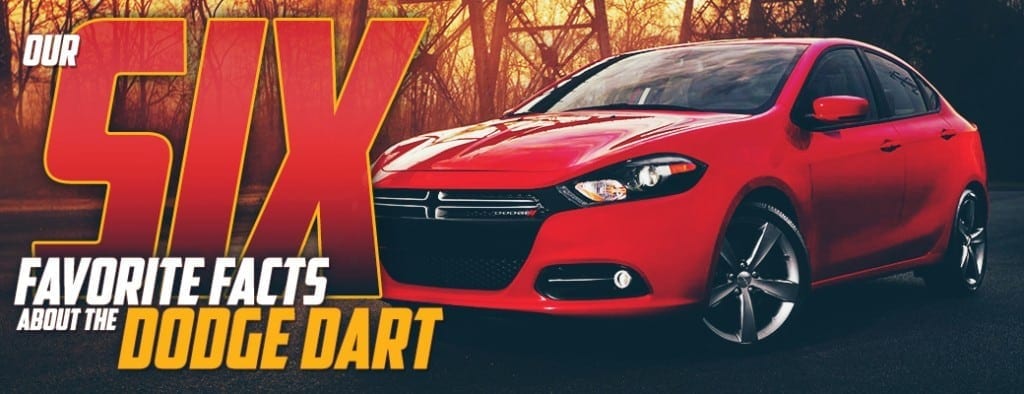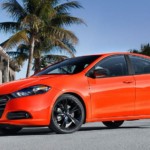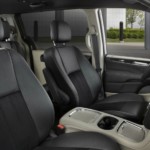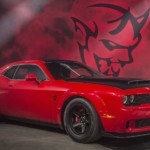The 2016 Dodge Dart is popping up on lots throughout the country, and many car buyers are clamoring to get their hands on this affordable compact car. As you’re waiting for your new ride, you’ll probably come across some Dart enthusiasts who claim they know everything about the nameplate. Well, aren’t they ready for a surprise?
We’ve compiled some of our favorite Dodge Dart facts below, and these tidbits of info provide some history and background on the beloved nameplate. Continue reading, and you can use these facts to impress your friends, family, or your fellow Dart drivers…
Dodge Actually Capitalized on the ‘Dart’ Name
The nameplate of this legendary sedan was presumably chosen due to a dart’s ability to find its mark. The little piece of metal rockets through the air with a balance of abandon and precision, able to land wherever the thrower intended. It’s a relatively clever name, but we rarely see the brand taking the ‘dart’ literally.
However, back in the day, the brand capitalized on the unconventional name. During the 1970s, plenty of Dodge dealerships displayed a giant dart board and several giant darts to advertise the popular vehicle. The three-dimensional display showcased 12 different darts, each highlighting the nameplate’s variety of models. The board included all of the top attributes of the vehicle, like the fuel economy, spacious trunk, or high trade-in value.
Surprisingly, the vehicle wasn’t always going to be named the Dart. When the name was first proposed in the late 1950s, it was rejected by company executives. The brand commissioned a research program to investigate whether the name ‘Zipp’ would work. The results were presumably discouraging, as the vehicle eventually earned the desired ‘Dart’ nameplate.
The ‘Hang Ten Dart’ Came With a Surfboard
The 1974 Hang Ten Dart was intended to appeal to Dodge’s sportier customers. In fact, the advertisements often featured the vehicle chilling next to a babe on the beach. The stylish vehicle was certainly a match made in heaven for this demographic. The interior featured a modge-podge of colors and materials, certainly accentuating the style of the 1970s. The pair of engine options were the ‘Slant 6’ and the V8, with both units capable of producing 145 horsepower.
However, the vehicle really made a name for itself due to the inclusion of an unconventional feature: a surfboard. Dodge offered a matching surfboard along with their 1974 Hang Ten Dart, practically convincing buyers that they should be appreciating their new ride down by the beach.
The Dart Essentially Replaced the Plymouth
When a brand retires a particular nameplate, you’ll often find that they’ll replace the vehicle with a similar ride. That wasn’t the case during the 1960 model year. With production of the bulky Plymouth being transferred to another automotive brand, Dodge didn’t replace it with a similar van-like vehicle. Instead, they introduced the considerably smaller Dart.
This strategy wasn’t completely out of left field. Both vehicles included the relatively vague “standard” segment, and both rides were intended to be low-cost options. The brand also used the same unibody platform as the Dodge Dart, although the wheelbase ended up being considerably smaller. However, that’s where the similarities ended, as no one would ever confused the Plymouth with a Dart.
The brand’s attempt at supplanting the Plymouth ended up working. As Dodge looked to replace the brand’s retired vehicle with other similar rides (like the Matador and Polara), the Dart ended up being a best-seller.
The ‘Dart’ Name Was Nearly Retired
We may not be sitting here today discussing the Dodge Dart if not for a last-second decision by some Dodge executives. Upon the release of the nameplate’s third generation in 1963, the company was planning on switching the vehicle’s name to the Lancer.
Why make such a drastic switch? The brand wanted to highlight the “senior compact’s” longer wheelbase (111 inches). Eventually, the company held on to the Dart nameplate, and thank goodness.
The Dart Taxi Was a Real Thing
If you were driving around in the 1960s and 1970s, you may have seen plenty of Dodge Darts on the road. That’s because the nameplate was offered to a number of taxi companies between 1963 and 1976.
These Darts were predictably revamped to better cater to these commercial drivers. The interior featured heavy-duty floor mats and heavy-duty, black, foam seats, as well as a black all-vinyl trim that covered the vehicle. Outside of the Dart, admirers would find heavy-duty brakes, tires, torsion bars… all essential mechanical inclusions.
By 1976, Dodge was producing packages that appealed specifically to these taxi drivers. The Chrome Yellow taxi package came equipped with a slant-six engine that could pump out 95 horsepower and 170 pounds-feet of torque. When accompanied by the rarely-seen A727-RG transmission, drivers could expect 90 horsepower and 165 pounds-feet of torque.
Of course, the vehicle was also offered in an exclusive yellow shade. The color was unavailable for standard use, and it was only referred to by its sales code, ‘999.’
The Dart Has Some Racing Experience
The Dodge Dart may not necessarily be known for its speed, but that didn’t prevent the nameplate from participating in several races. A performance version of the vehicle, the Dart GT, was available in 1966, and the vehicle included a 275-horsepower V8 engine.
This specific vehicle presumably convinced the brand to enter the Trans-American Sedan Championship, a racing event that prohibited most modifications. The vehicle, anchored by driver Bob Tullius, ended up winning the 24-hour endurance race at the Marlboro Motor Raceway, and it won a similar race at the Riverside International Raceway.
By the end of the decade, the nameplate was participating in super stock races. Hurst Performance helped modify the Dart a bit, including a large big-block and a Hemi-powered engine.
Even if you’ve owned several generations of the Dodge Dart, we’re sure you weren’t familiar with all of those facts. It’s interesting to consider that the compact car could be used as a taxi or a racecar, and it’s also notable that the nameplate was nearly retired. While these historical facts may not necessarily impact your final purchasing choice on cars, you may find yourself having a bit of a soft spot for the 2016 Dodge Dart.






